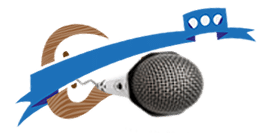The Summer of Love was a social phenomenon that occurred during the summer of 1967, when as many as 100,000 people, mostly young people sporting hippie fashions of dress and behavior, converged in San Francisco’s neighborhood Haight-Ashbury. Although hippies also gathered in many other places in the U.S., Canada and Europe, San Francisco was at that time the most publicized location for hippie subculture.
Hippies, sometimes called flower children, were an eclectic group. Many were suspicious of the government, rejected consumerist values, and generally opposed the Vietnam War. A few were interested in politics; others were concerned more with art (music, painting, poetry in particular) or religious and meditative practices.
Early 1967
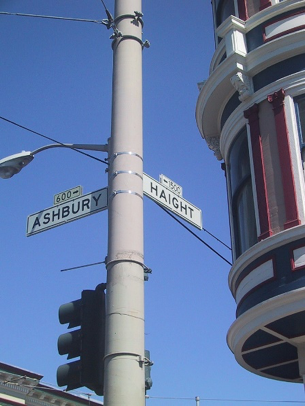 Inspired by the Beat Generation of authors of the 1950s, who had flourished in the North Beach area of San Francisco, those who gathered in Haight-Ashbury during 1967 allegedly rejected the conformist and materialist values of modern life; there was an emphasis on sharing and community. The Diggers established a Free Store, and a Free Clinic where medical treatment was provided.
Inspired by the Beat Generation of authors of the 1950s, who had flourished in the North Beach area of San Francisco, those who gathered in Haight-Ashbury during 1967 allegedly rejected the conformist and materialist values of modern life; there was an emphasis on sharing and community. The Diggers established a Free Store, and a Free Clinic where medical treatment was provided.
The prelude to the Summer of Love was a celebration known as the Human Be-In at Golden Gate Park on January 14, 1967, which was produced and organized by artist Michael Bowen.
James Rado and Gerome Ragni were in attendance, allegedly helping to inspire their musical drama Hair. Rado recalled, “There was so much excitement in the streets and the parks and the hippie areas, and we thought `If we could transmit this excitement to the stage it would be wonderful….’ We hung out with them and went to their Be-Ins [and] let our hair grow. It was very important historically, and if we hadn’t written it, there’d not be any examples. You could read about it and see film clips, but you’d never experience it. We thought, ‘This is happening in the streets,’ and we wanted to bring it to the stage.'”
Also at this event, Timothy Leary voiced his phrase, “turn on, tune in, drop out”. This phrase became the chisel for shaping the entire hippie counterculture, as it voiced the key ideas of 1960’s rebellion. These ideas included communal living, political decentralization, and dropping out. The term “dropping out” became popular among many high school and college students, who would often abandon their education for a summer of sex, drugs, and rock n’ roll.
The event was announced by the Haight-Ashbury’s hippie newspaper, the San Francisco Oracle:
A new concept of celebrations beneath the human underground must emerge, become conscious, and be shared, so a revolution can be formed with a renaissance of compassion, awareness, and love, and the revelation of unity for all mankind.
The gathering of approximately 30,000 at the Human Be-In helped publicize hippie fashions.
The term “Summer of Love” originated with the formation of the Council for the Summer of Love during the spring of 1967 as a response to the convergence of young people on the Haight-Ashbury district. The Council was composed of The Family Dog, The Straight Theatre, The Diggers, The San Francisco Oracle, and approximately twenty-five other people, who sought to alleviate some of the problems anticipated from the influx of people expected during the summer. The Council also assisted the Free Clinic and organized housing, food, sanitation, music and arts, along with maintaining coordination with local churches and other social groups.
Popularization
The increasing numbers of youth traveling to the Haight-Ashbury district alarmed the San Francisco authorities, whose public warning was that they would keep hippies away. Adam Kneeman, a long-time resident of the Haight-Ashbury, recalls that the police did little to help the hordes of newcomers, much of which was done by residents of the area.
College and high-school students began streaming into the Haight during the spring break of 1967 and the local government officials, determined to stop the influx of young people once schools ended for the summer, unwittingly brought additional attention to the scene, and a series of articles in local papers alerted the national media to the hippies’ growing numbers. By spring, some Haight-Ashbury residents responded by forming the Council of the Summer of Love, giving the event a name.
The media’s coverage of hippie life in the Haight-Ashbury drew the attention of youth from all over America. Hunter S. Thompson termed the district “Hashbury” in The New York Times Magazine, and the activities in the area were reported almost daily.
The event was also reported by the counterculture’s own media, particularly the San Francisco Oracle, the pass-around readership of which is thought to have exceeded a half-million people that summer, and the Berkeley Barb.
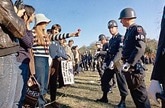 The media’s reportage of the “counterculture” included other events in California, such as the Fantasy Fair and Magic Mountain Music Festival in Marin County and the Monterey Pop Festival, both during June 1967. At Monterey, approximately 30,000 people gathered for the first day of the music festival, with the number increasing to 60,000 on the final day. Additionally, media coverage of the Monterey Pop Festival facilitated the Summer of Love as large numbers of hippies traveled to California to hear favorite bands such as The Who, Grateful Dead, the Animals, Jefferson Airplane, Quicksilver Messenger Service, The Jimi Hendrix Experience, Otis Redding, The Byrds, and Big Brother and the Holding Company featuring Janis Joplin.
The media’s reportage of the “counterculture” included other events in California, such as the Fantasy Fair and Magic Mountain Music Festival in Marin County and the Monterey Pop Festival, both during June 1967. At Monterey, approximately 30,000 people gathered for the first day of the music festival, with the number increasing to 60,000 on the final day. Additionally, media coverage of the Monterey Pop Festival facilitated the Summer of Love as large numbers of hippies traveled to California to hear favorite bands such as The Who, Grateful Dead, the Animals, Jefferson Airplane, Quicksilver Messenger Service, The Jimi Hendrix Experience, Otis Redding, The Byrds, and Big Brother and the Holding Company featuring Janis Joplin.
“San Francisco (Be Sure to Wear Flowers in Your Hair)”
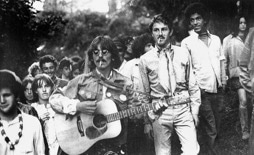 Musician John Phillips of the band The Mamas & the Papas wrote the song “San Francisco (Be Sure to Wear Flowers in Your Hair)” for his friend Scott McKenzie. It served to promote both the Monterey Pop Festival that Phillips was helping to organize, and to popularize the flower children of San Francisco. Released on May 13, 1967, the song was an instant success. By the week ending July 1, 1967, it scored number four on the Billboard Hot 100 in the United States, where it remained for four consecutive weeks. Meanwhile, the song scored number one in the United Kingdom and much of Europe. The single is purported to have sold more than 7 million copies worldwide
Musician John Phillips of the band The Mamas & the Papas wrote the song “San Francisco (Be Sure to Wear Flowers in Your Hair)” for his friend Scott McKenzie. It served to promote both the Monterey Pop Festival that Phillips was helping to organize, and to popularize the flower children of San Francisco. Released on May 13, 1967, the song was an instant success. By the week ending July 1, 1967, it scored number four on the Billboard Hot 100 in the United States, where it remained for four consecutive weeks. Meanwhile, the song scored number one in the United Kingdom and much of Europe. The single is purported to have sold more than 7 million copies worldwide
Use of drugs
Psychedelic drug use became common. After losing his untenured position as an Instructor on the Psychology Faculty at Harvard University, Timothy Leary became a major advocate for the recreational use of psychedelic drugs. After taking psilocybin, a drug extracted from certain mushrooms that causes effects similar to those of LSD, Leary endorsed the use of all psychedelics for personal development. He often invited friends as well as an occasional graduate student to consume such drugs along with him and colleague Richard Alpert.
On the West Coast, author Ken Kesey, a prior volunteer for a CIA-sponsored LSD experiment, also advocated the use of the drug. Soon after participating, he was inspired to write the bestselling novel One Flew Over the Cuckoo’s Nest. Subsequently, after buying an old school bus, painting it with psychedelic graffiti and attracting a group of similarly-minded individuals he dubbed the Merry Pranksters, Kesey and his group traveled across the country, often hosting “acid tests” where they would fill a large container with a diluted low dose form of the drug and give out diplomas to those who passed their test.
Along with LSD, cannabis was also much used during this period. With the various all-organic fashions beginning to increase, this drug was even more appealing than LSD because apart from creating a euphoric high, it was all-natural as well. However, as a result, crime increased among users because new laws were subsequently enacted to control the use of both drugs. The users thereof often had sessions to oppose the laws, including The Human Be-In referenced above as well as various “smoke-ins” during July and August, however, their efforts at repeal were unsuccessful.
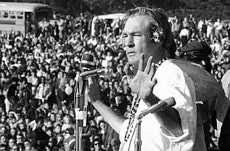
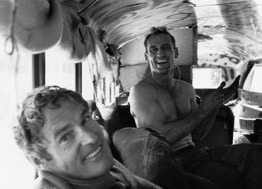
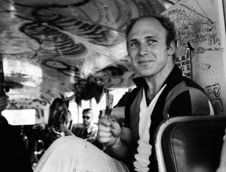
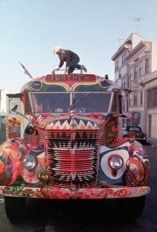
In London
In England, gatherings with a theme similar to that of the Summer of Love occurred in various places in London. The UFO Club in Tottenham Court Road, open from December 1966 to October 1967, was a gathering place where psychedelic musical groups such as Pink Floyd and the Soft Machine played, accompanied by light shows. Pink Floyd performed their ‘Games For May’ concert in May. The 14 Hour Technicolour Dream in the Alexandra Palace on April 29 was another major event, where amongst others, Pink Floyd, The Crazy World of Arthur Brown, Soft Machine, The Move, Tomorrow, and The Pretty Things played.
On 29 May in Spalding, Lincolnshire, the UKs first Rock festival was held, Barbeque 67. A Legalise Pot Rally was held at Speakers’ Corner on 16 July, led by activist Stephen Abrams, featuring Allen Ginsberg and assorted London policemen.
It was soundtracked by songs such as “A Whiter Shade of Pale” by Procol Harum, “Itchycoo Park” by the Small Faces, “All You Need Is Love” by the Beatles and “Hole In My Shoe” by Traffic. The Beatles were a major influence, particularly by releasing Sgt Pepper’s Lonely Hearts Club Band on June 1. Much of the music was broadcast by certain radio stations, particularly Radio Caroline and Radio London, which introduced the DJ John Peel and his Perfumed Garden show.
The events were recorded and promoted by the newspaper International Times, also known as IT, and the magazine Oz. Notable graphic artists included Hapshash and the Coloured Coat (who were Nigel Weymouth and Michael English), The Fool (a Dutch group, endorsed by the Beatles), and Martin Sharp.
Many of the fashion shops, known as boutiques, such as Granny Takes A Trip, Hung On You and Dandie Fashions were on or near the Kings Road. These were where psychedelic clothing, such as kaftans, Victoriana, mini skirts and everything floral could be found.
Major promoters included John ‘Hoppy’ Hopkins, who helped establish the International Times, a hippie newspaper. He established the London Free School and the UFO psychedelic club and promoted the 14 Hour Technicolor Dream with Barry Miles, a writer who established the Indica Gallery and Bookshop. Paul McCartney was particularly vocal in his endorsement of the new fashions.
The establishment was mystified by and frightened of the new fashions, which were ridiculed by the tabloid press. Some notable arrests included Mick Jagger, Keith Richards, Robert Fraser and John ‘Hoppy’ Hopkins. The Times published an editorial headlined ‘Who Breaks A Butterfly On A Wheel?’ denouncing the arrest of Mick Jagger and Keith Richard.
The Diggers were a radical community-action group of activists and Street Theatre actors operating from 1966 to 1968, based in the Haight-Ashbury neighborhood of San Francisco. Their politics have been categorized as “left-wing”; more accurately, they were “community anarchists” who blended a desire for freedom with a consciousness of the community in which they lived. They were closely associated and shared a number of members with the guerrilla theater group San Francisco Mime Troupe.
The Diggers were formed out of after-hours Mime Troupe discussions between Emmett Grogan, Peter Coyote, Peter Berg, and Billy Landout
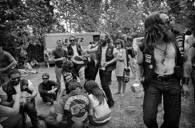
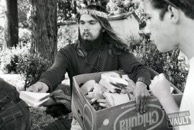
Origins
The Diggers took their name from the original English Diggers (1649–50) who had promulgated a vision of society free from buying, selling, and private property. During the mid- and late 1960s, the San Francisco Diggers organized free music concerts and works of political art, provided free food, medical care, transport, and temporary housing and opened stores that gave away stock. Some of their happenings included the Death of Money Parade, Intersection Game, Invisible Circus, and Death of Hippie/Birth of Free.
Activities
The group sought to create a mini-society free of money and capitalism. One of the first Digger activities was the publishing of various broadsides, which were published by sneaking into the local Students for a Democratic Society office and using their Gestetner printer. The leaflets were eventually called the “Digger Papers,” and soon morphed into small pamphlets with poetry, psychedelic art, and essays. The “Digger Papers” often included statements that mocked the prevailing attitude of the counterculture promoted by less radical figures like the Haight-Independent Proprietors (HIP), Timothy Leary, and Richard Alpert. The first paper mocked the acid community, saying “Time to forget because flowers are beautiful and the sun’s not yellow, it’s chicken!” The Digger Papers rarely included authors, although pseudonyms were sometimes used like “George Metevsky,” a reference to the “Mad Bomber” George Metesky. After some HIP members tried to find out who the Diggers were, Grogan and Landout responded with a telegram that read, “REGARDING INQUIRIES CONCERNED WITH THE IDENTITY AND WHEREABOUTS OF THE DIGGERS; HAPPY TO REPORT THE DIGGERS ARE NOT THAT.”
The Diggers provided a free food service in the Panhandle of Golden Gate Park in Haight-Ashbury every day at four o’clock, feeding about 100 people with a stew from donated or stolen meat and vegetables that was served from behind a giant yellow picture frame, called the Free Frame of Reference, which people were required to step through before being served. The Diggers also popularized whole wheat bread with their Digger Bread, baked in coffee cans at the Free Bakery in the basement of Episcopal All Saints Church on 1350 Waller Street. In cooperation with All Saints Church and later via the Haight Ashbury Switchboard at 1830 Fell Street, they arranged free “crashpads” for homeless youth drawn to the Haight-Ashbury area.
They opened numerous Free Stores in Haight-Ashbury, in which all items were free for the taking or giving. The stores offered discarded items that were still in usable condition. The first Free Store, in a six-car garage on Page Street that they found filled with empty picture frames that they tacked up on the side of the building, was called the Free Frame of Reference and was later superseded by the Trip Without a Ticket on Frederick Street. It was unclear how the stores were funded. The 1% Free poster, showing two Chinese Tong assassins under the Chinese character for revolution, was thought to be demanding a 1% tithe from merchants, but that was not the case. The poster was a challenge, implicitly suggesting that ‘free’ people were the minority, and inciting others to step up. They also opened a Free Medical Clinic, initially by inviting volunteers from the University of California, San Francisco medical school up the hill from the neighborhood.
They threw free parties with music provided by the Grateful Dead, Janis Joplin, Jefferson Airplane and other bands. They also staged street theater events such as driving a truck of semi-naked belly dancers through the Financial District, inviting brokers to climb on board and forget their work. On December 17, 1966, the Diggers held a happening called “The Death of Money” in which they dressed in animal masks and carried a large coffin full of fake money down Haight Street, singing “Get out my life, why don’t you babe?” to the tune of Chopin’s “Death March.” This was a precursor to the happening “The Death of Hippie,” staged in October 1967. In “The Death of Hippie,” also staged in the Haight-Ashbury neighborhood, masked participants carried a coffin with the words “Hippie–Son of Media” on the side. This event was meant to mark the end of the era of Haight-Ashbury. The event was staged in such a way that any media outlet that simply described the happening would unknowingly transmit the Diggers’ message that Hippies were a media invention. This was called “creating the condition you describe”. The Diggers skillfully used this technique for media relations. Their own publications, notably the Digger Papers, are the origin of such phrases as “Do your own thing” and “Today is the first day of the rest of your life.” The Diggers fostered and inspired later groups like the Yippies.
While the Free Food and Medical Clinics were responses to necessary conditions caused by the enormous influx of young people during the heyday of the hippie scene, conditions that the San Francisco government was ignoring, the Diggers’ central tenet was to be “authentic”. Running soup kitchens and medical clinics was not the authentic, long-term concern of the Diggers’ founders. After passing those institutions on to a local Church and Dr. David Smith to continue, the Diggers moved out of the City, creating various land bases in Forest Knolls, Olema, Covelo, Salmon River, Trinidad, and Black Bear Ranch, California. In those places they integrated with other groups: The Free Bakery, the Up Against the Wall Motherfuckers, and the Gypsy Truckers, creating The Free Family. That larger group still exists informally, and many of the Diggers’ children and grandchildren remain close and in contact with one another, and many (children included) are still involved with progressive causes.
Various alternative communities like those the Diggers founded were covered in a documentary film made by Will Vinton, who later went on to fame for his ClayMation clay-animation studio in Portland, Oregon, His 1970-ish documentary feature-length film was titled “Gone for A Better Deal,” which, so far, has never been released to any video format.Haight-Ashbury Golden-Gate park poet Ashleigh Brilliant, later known for his series of epigrams on cards and in books called “pot-Shots,” has recently released a CD of his songs, parodies of old movie and show tunes about “life in the Haight.” The album includes two songs about the Diggers.
Funeral and aftermath
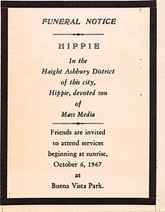 After many people left at the end of summer to resume their college studies, those remaining in the Haight wanted to commemorate the conclusion of the event. A mock funeral entitled “The Death of the Hippie” ceremony was staged on October 6, 1967, and organizer Mary Kasper explained the intended message:
After many people left at the end of summer to resume their college studies, those remaining in the Haight wanted to commemorate the conclusion of the event. A mock funeral entitled “The Death of the Hippie” ceremony was staged on October 6, 1967, and organizer Mary Kasper explained the intended message:
We wanted to signal that this was the end of it, to stay where you are, bring the revolution to where you live and don’t come here because it’s over and done with.
